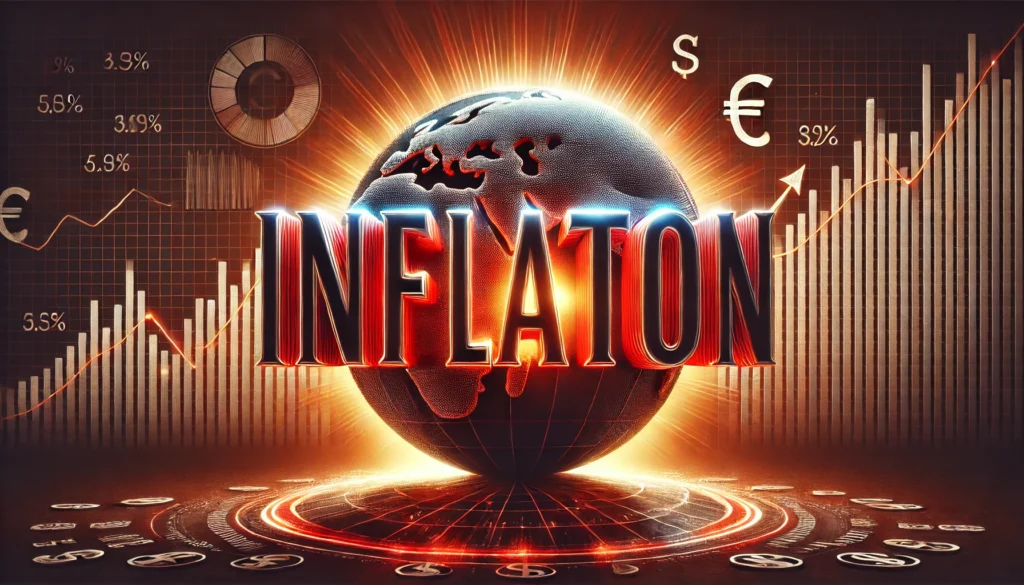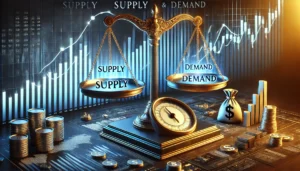
Introduction
Inflation is one of the most critical economic indicators affecting individuals, businesses, and governments worldwide. While moderate inflation is a natural part of economic growth, excessive or prolonged inflation can lead to severe financial instability. This article explores the causes of it, its impact on the global economy, and how different countries manage it.
Note: For not repeating “inflation” many times we referred to it as “it”.
1. What Is Inflation?
Definition and Types
It refers to the rate at which the general level of prices for goods and services rises, eroding purchasing power. The primary types of inflation include:
A. Demand-Pull:
Caused by increased consumer demand.
B. Cost-Push:
Driven by higher production costs.
C. Hyperinflation:
Extremely high one that destabilizes economies.
D. Deflation:
The opposite of inflation, where prices fall, potentially leading to recession.
📌 Source: Investopedia – Inflation Explained
2. Causes
A. Monetary Policy and Money Supply
Central banks influence it by controlling money supply through interest rates and quantitative easing.
B. Supply Chain Disruptions
Shortages of raw materials and energy can increase production costs, leading to it.
C. Government Spending and Fiscal Policies
Excessive government borrowing and stimulus programs can inject too much money into the economy, fueling it.
📌 Source: Federal Reserve – Monetary Policy and Inflation
3. How It Affects Businesses and Consumers
A. Purchasing Power Erosion
As prices rise, consumers can buy fewer goods with the same income, reducing overall living standards.
B. Business Profitability and Costs
- Higher costs of raw materials lead to increased production expenses.
- Companies may pass these costs to consumers, further fueling it.
C. Investment and Interest Rates
- It often leads to higher interest rates, making borrowing more expensive.
- Investors shift towards inflation-protected assets like gold and real estate.
📌 Source: World Economic Forum – Inflation’s Impact on Global Markets
4. Inflation’s Effect on National Economies
A. Economic Growth and Recession Risks
- Moderate: Encourages spending and investment.
- High: Can reduce economic output and slow growth.
B. Exchange Rates and Global Trade
- Countries with highly inflated economy may see currency depreciation, making exports cheaper but increasing import costs.
C. Wage Growth vs. Price Growth
- Wages often struggle to keep up with it, reducing real income.
📌 Source: International Monetary Fund (IMF) – Global Inflation Trends
5. How Countries Manage It
A. Central Bank Policies
- Adjusting interest rates (tightening or loosening monetary policy).
- Open market operations to control liquidity.
B. Government Fiscal Strategies
- Reducing government spending.
- Implementing tax policies to curb excessive money flow.
C. Alternative Economic Measures
- Encouraging productivity growth.
- Strengthening supply chains to stabilize prices.
📌 Source: Bank of England – Inflation Control Measures
Conclusion
Inflation is a double-edged sword—necessary for economic growth but dangerous when uncontrolled. Governments and central banks continuously monitor its levels to maintain stability. Understanding how it shapes the global economy allows individuals and businesses to make informed financial decisions.
Call to Action: What are your thoughts on inflation’s impact on everyday life? Share your opinion in the comments!
📌 Additional Resources:
Read Also: The Stock Markets | The Big Influence We Must Know



